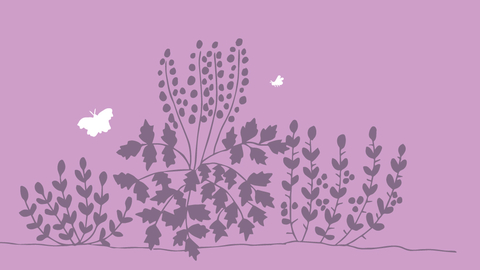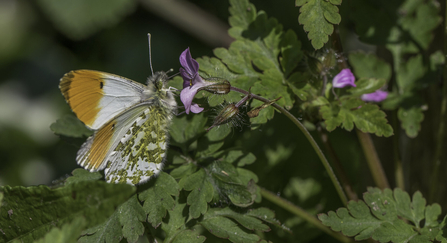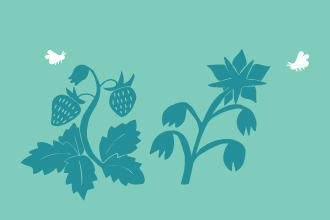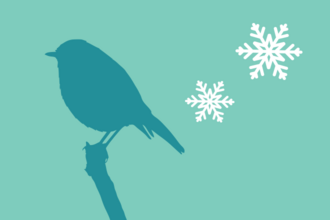
How to make a shrub garden for wildlife
Woody shrubs and climbers provide food, shelter and breeding places for our wildlife. Nesting birds and hibernating insects make their homes in them, predators seek out insects and other invertebrates to eat, and insects like butterflies use them as natural wind breaks. They also provide areas of shade and cover, allowing animals to move around safely, and they boost the variety of habitats in the garden.
It’s likely that many of your shrubs and climbers are non-native or cultivated. While there’s no question that native plants support a wider range of biodiversity, many non-natives perform very well indeed, especially in producing winter berries and nectar-rich flowers, as well as evergreen foliage to provide cover in the winter. Remember, variety is the spice of wildlife!
Guelder-rose ©Karen Lloyd
Planning your shrub garden:
When planning your shrubs, consider year-round interest. When the winter weather is at its worst, for instance, many birds normally found in the wider countryside will move into gardens for shelter and food. Fruiting shrubs like hawthorn and holly provide a welcome meal and shelter at this time, particularly for migrating birds.
Provide year-round sustenance for insects by growing shrubs that flower at various stages of the year (early spring is key for many insects). Many of these species will double their value by producing berries later on too.
Some seasonal planting ideas:
- Spring: Currant, Barberry, Forsythia, Guelder rose
- Summer: Hebe, English lavender, Honeysuckle, Elder
- Autumn: Heather, St John’s Wort
- Winter: Ivy, Witch hazel, Sweet box
Growing climbing plants up walls or fences will create similar environments to hedges and greatly improve the boundary for wildlife. Evergreen shrubs allow birds and insects a year-round home and protection from predators, especially if they are thorny like barberry, or particularly dense like holly and yew.
Remember, variety is the spice of wildlife!
Establishing your shrub garden:
- Plant shrubs between November and March, but avoid waterlogged or frozen ground.
- Keep the base of plants free from weeds until they are established by using a thick mulch of leaf mould or compost.
- Create an ‘overlap’ when planting to establish a wildlife ‘corridor’. While new shrubs need enough room to develop, it is equally useful to maintain some connections to provide cover for creatures to move about.
- Watch out for the robins while you’re planting, they’ll be very friendly!
Maintaining your shrub garden:
- Delay the traditional autumn tidy up until spring. The plant and leaf-litter provide myriad places for invertebrates to overwinter.
- Leave some non-diseased shrub prunings out of sight around the base of the shrubs. When clearing fallen leaves from the grass, place some directly under shrubs and in borders.
- Use mulch to reduce the need for weeding during the first couple of years while the shrub is settling in. This will also help retain soil moisture. Continual soil disturbance will encourage buried weed seeds to emerge, so keep weeding to a minimum.
- Prune those shrubs that need it after a few years.
- Avoid using chemical fertilisers and pesticides as they are not wildlife-friendly!

Chris Lawrence
Top tips
- When planting for nectar, avoid double flowers or sterile varieties that limit the feeding opportunities for insects.
- Make sure that any plants you select are suitable for your garden conditions. Get an idea of what will work by seeing what looks healthy in your neighbourhood.
Suggested plants
- Barberry - Berberis spp.
- Bell Heather - Erica cinerea
- Box - Buxus sempervirens
- Currant - Ribes spp.
- Elder - Sambucus nigra
- English Lavender - Lavandula angustifolia
- Forsythia spp.
- Guelder Rose - Viburnum opulus
- Hazel - Corylus avellana
- Heather (Ling) - Calluna vulgaris
- Hebe spp.
- Holly - Ilex aquifolium
- Honeysuckle - Lonicera periclymenum
- Ivy - Hedera helix
- Privet - Ligustrum vulgare
- Skimmia - Skimmia japonica
- St John’s Wort - Hypericum spp.
- Sweet box - Sarcococca confusa
- Witch hazel - Hamamelis spp.



